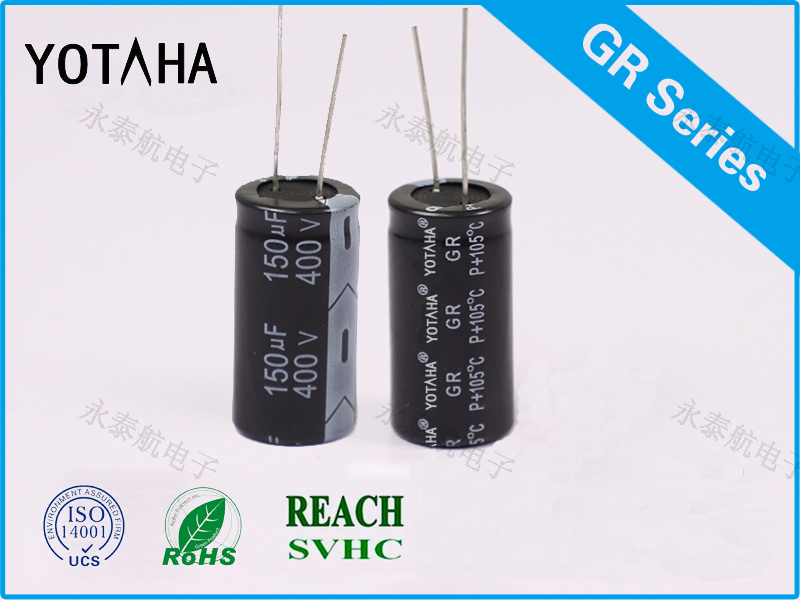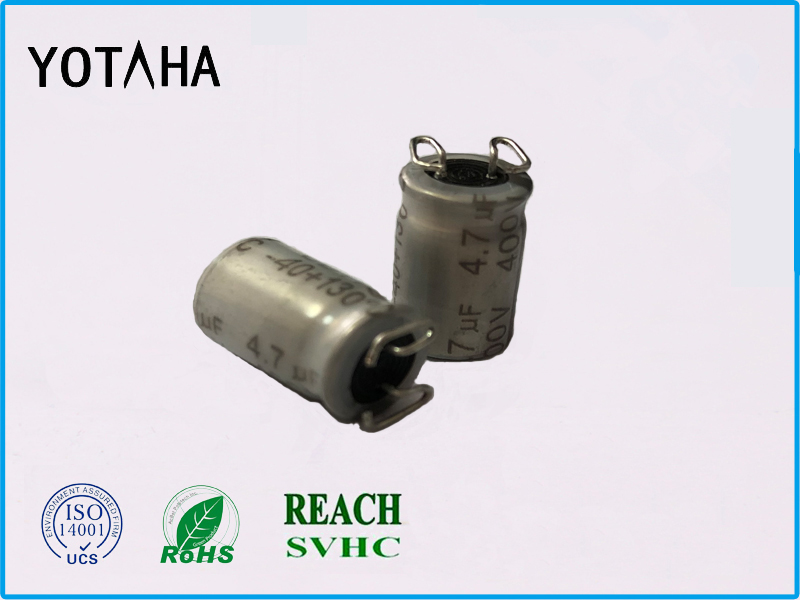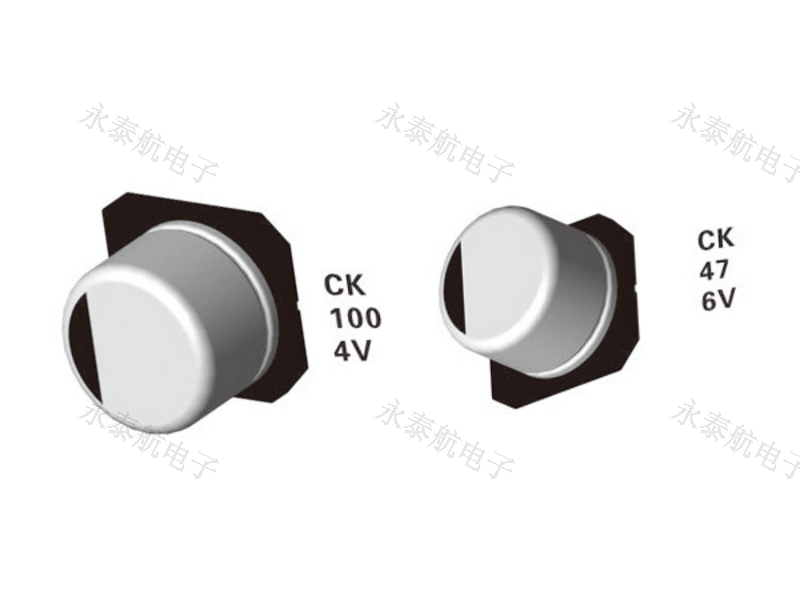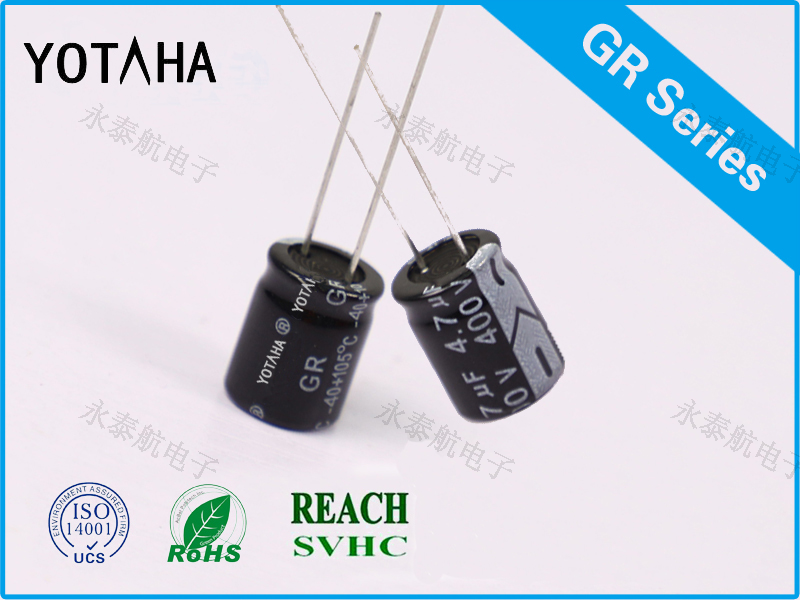The selection of aluminum electrolytic capacitors requires many considerations, such as: capacitor capacity, withstand voltage, temperature range, package form and size; ripple current, ripple voltage; leakage current, ESR, dissipation factor, impedance/frequency characteristics; electrolytic capacitors The life expectancy, etc., comprehensive consideration of actual needs, performance and cost.
Capacity and rated working voltage. In the actual capacitor selection, use a larger capacity capacitor where the current changes quickly, but it is not that the larger the capacity, the better. First of all, the capacity increases, and the cost and volume may rise. In addition, The larger the capacitance, the larger the charging current and the longer the charging time. These are all considerations in actual application selection. Rated operating voltage: The maximum DC voltage that the capacitor can withstand for a long time and reliably within the specified operating temperature range. In the AC circuit, pay attention to the maximum value of the AC voltage applied cannot exceed the DC working voltage value of the capacitor.
In the filter circuit, the withstand voltage value of the capacitor should not be less than 1.42 times the effective value of the AC. Another issue to be noted is the problem of working voltage margin, which is generally above 15%. For example, the rated voltage of a capacitor is 50V. Although the surge voltage may be as high as 63V, generally the highest voltage is only 42V. Let the rated voltage of the capacitor have more margin, which can reduce internal resistance, reduce leakage current, reduce loss angle, and increase life. Although the use of 50V aluminum electrolytic capacitors for 48V working voltage will not cause problems in a short time, but after long use, the life may be reduced.
Dielectric loss, the energy consumed by a capacitor under the action of an electric field, is usually expressed by the ratio of the loss power to the reactive power of the capacitor, that is, the tangent of the loss angle. The greater the loss angle, the greater the loss of the capacitor, and the capacitor with a large loss angle is not suitable for high-frequency operation. Dissipation factor (DF) exists in all capacitors, and sometimes the DF value is expressed by the loss angle tanδ. Theoretically, the lower the parameter, the better. In actual applications, whether the DF value is high or low is related to temperature, capacity, voltage, frequency, etc. for capacitors of the same brand and series; when the capacity is the same, the resistance The higher the pressure, the lower the DF value. In addition, the higher the temperature, the higher the DF value, and the higher the frequency, the higher the DF value.
External dimensions, external dimensions are related to weight and pin type. Single ended is a radial lead type, screw is a lock screw type, and there are also chip aluminum electrolytic capacitors. As for the weight, two capacitors with the same capacity and withstand voltage, but with different brands, must have different weights; and the external dimensions are more related to the housing planning. Generally speaking, capacitors with the same diameter and capacity can be replaced by capacitors with a lower height, but the problem of mechanical interference should be considered when replacing a lower capacitor with a higher length.
ESR, a capacitor will produce various impedances and inductances due to its structure. ESR equivalent series resistance and ESL equivalent series inductance are a pair of important parameters-this is the basis of capacitive reactance. A capacitor with a small equivalent series resistance (ESR) and a relatively large external capacitor can absorb the peak (ripple) current during fast switching. It is more cost-effective to use a capacitor with a large ESR in parallel. However, this requires a trade-off between PCB area, number of devices and cost.
Ripple current and ripple voltage are called ripple current and ripple voltage in some materials, meaning that the capacitor can withstand the ripple current/voltage value, and the ripple voltage is equal to the product of ripple current and ESR. When the ripple current increases, even when the ESR remains unchanged, the ripple voltage will increase exponentially. In other words, when the ripple voltage increases, the ripple current also increases, which is also a requirement The reason why the capacitor has a lower ESR value. After the ripple current is superimposed, the equivalent series resistance (ESR) inside the capacitor causes heat, which affects the service life of the capacitor. Generally, the ripple current is proportional to the frequency, so the ripple current is relatively low at low frequencies. .
The rated ripple current is a value defined under the highest operating temperature condition, and the ripple tolerance of a capacitor in practical applications is also related to the ambient temperature of its use and the temperature level of the capacitor itself. The specification usually provides a maximum ripple current that each temperature class capacitor can withstand under a specific temperature condition, and even provides a detailed chart to help users quickly find that a certain expected service life is allowed under certain ambient temperature conditions. The amount of capacitance ripple.
Leakage current, the medium of the capacitor has a great hindrance to DC current. Since the aluminum oxide film medium is immersed in electrolyte, when voltage is applied, a small current called leakage current will be generated when the oxide film is reformed and repaired. Generally, the leakage current will vary with temperature and voltage. The rise and increase. Its calculation formula is roughly: I=K×CV, the unit of leakage current I is μA, and K is a constant. Generally speaking, the higher the capacitor capacity, the greater the leakage current.
Life, there are many reasons that affect the life of aluminum electrolytic capacitors, such as overvoltage, reverse voltage, high temperature, rapid charge and discharge, etc. Under normal use, the biggest impact is temperature, because the higher the temperature, the faster the electrolyte loss . It should be noted that the temperature here does not refer to the ambient or surface temperature, but refers to the working temperature of the aluminum foil. The service life of the capacitor is halved every time the operating temperature of the capacitor increases by 10°C, so don't think that the aluminum electrolytic capacitor with a life of 2000 hours is better than that of 1000 hours. Pay attention to the test temperature to confirm the life. Each manufacturer has a calculation formula for temperature and life. When designing a capacitor, it is necessary to refer to the actual data for calculation. What needs to be understood is to improve the life of aluminum electrolytic capacitors. First, reduce the operating temperature and keep away from the heat source on the PCB. Second, consider using capacitors with a high maximum operating temperature. Of course, the price will be higher.
Impedance, at a specific frequency, the resistance that blocks the passage of alternating current is the so-called impedance. It is closely related to the capacitance value and inductance value in the capacitance equivalent circuit, and it is also related to ESR. The capacitive reactance of the capacitor gradually decreases as the frequency increases in the low frequency range, and the reactance drops to the value of ESR when the frequency continues to increase and reaches the intermediate frequency range. When the frequency reaches the high frequency range, the inductive reactance becomes dominant, so the impedance increases as the frequency increases. The output filter electrolytic capacitor in a switching power supply has a sawtooth voltage frequency of up to tens of kHz or even tens of MHz. At this time, the capacitance is not its main indicator. The standard to measure the quality of high-frequency aluminum electrolytic capacitors is "impedance- "Frequency" characteristics require a lower equivalent impedance within the operating frequency of the switching power supply, and at the same time it has a good filtering effect on the high-frequency spikes generated when the semiconductor device is working.
Although on the surface, the lower the DF, leakage current, and ESR, the higher the ripple current, and the better the performance of aluminum electrolytic capacitors, but the price of performance improvement is the increase in size and price. Therefore, the choice of aluminum electrolytic capacitors must be cautious, both performance requirements and package size must be considered. When designing, you must carefully review the relevant product manuals according to the system requirements, carefully determine the appropriate model, and conduct actual tests.






